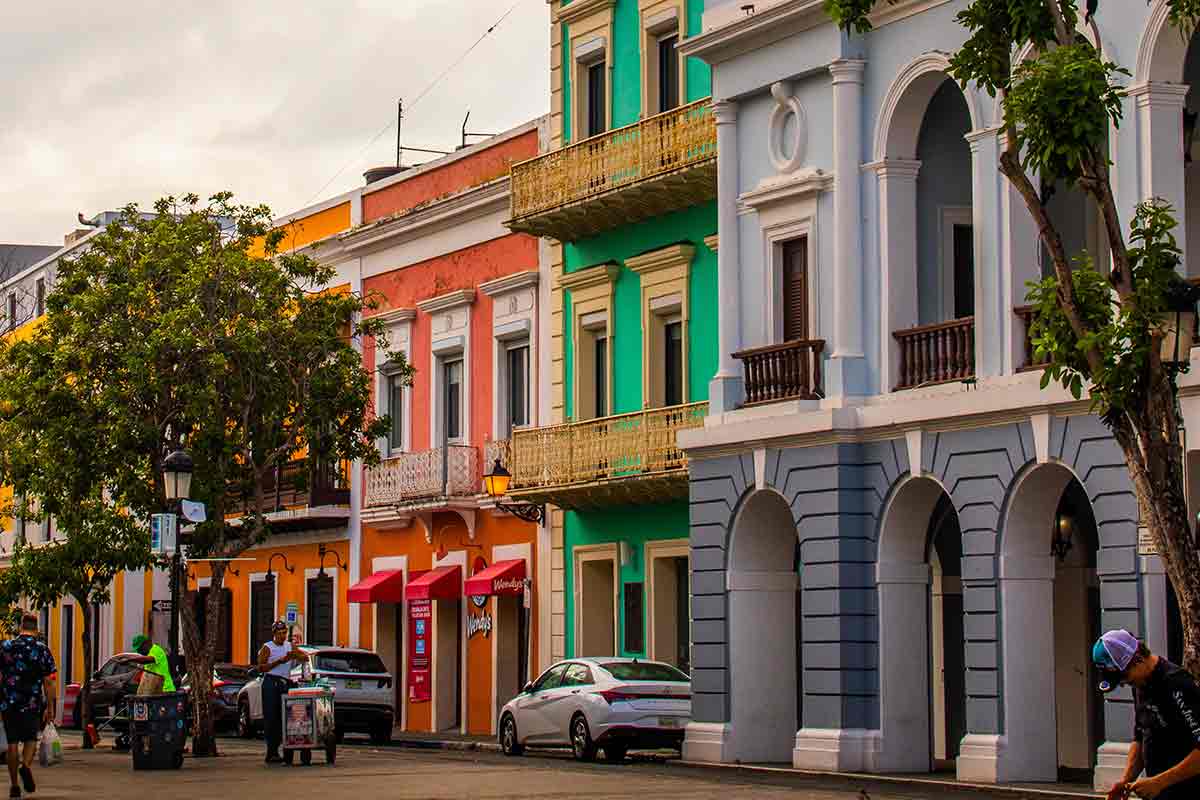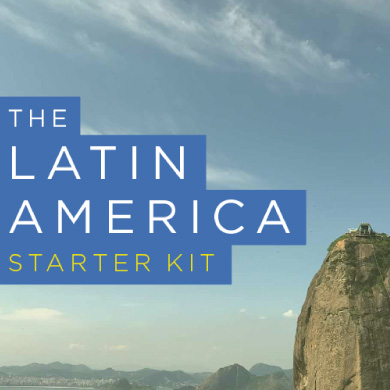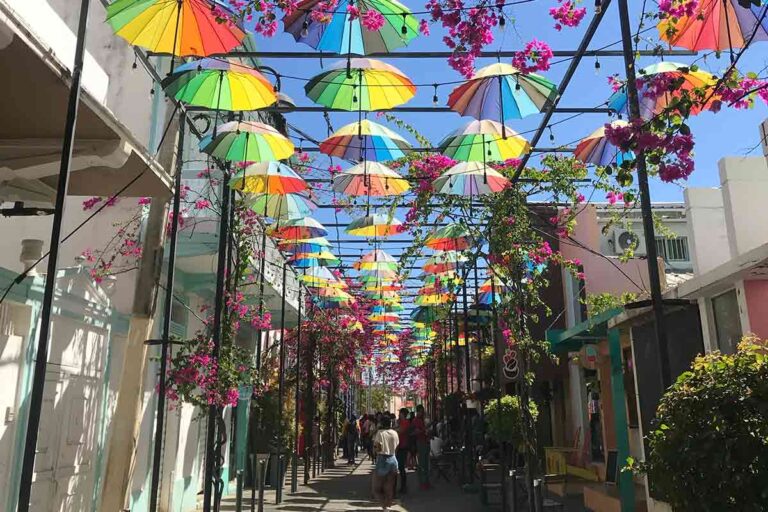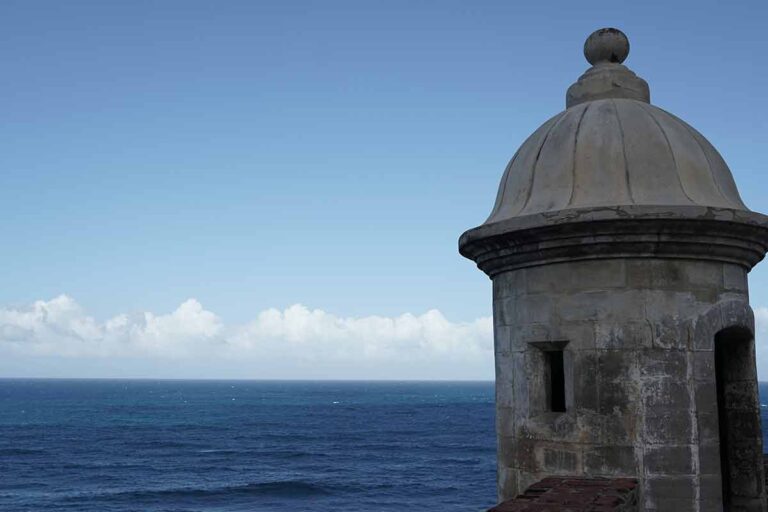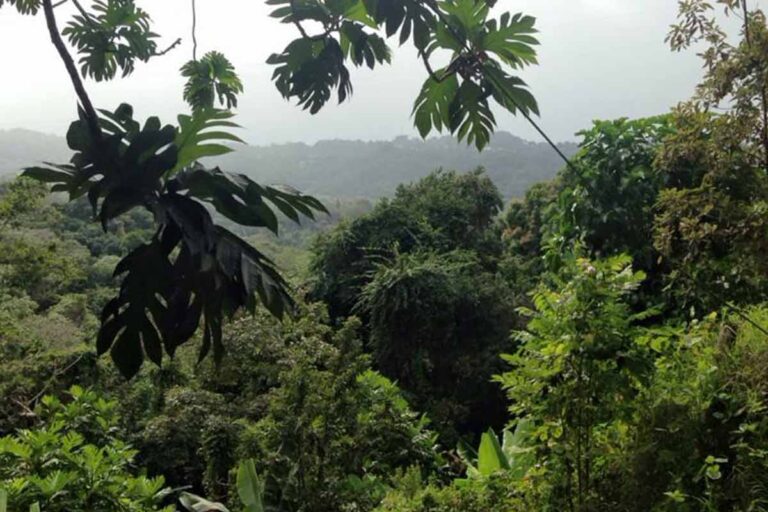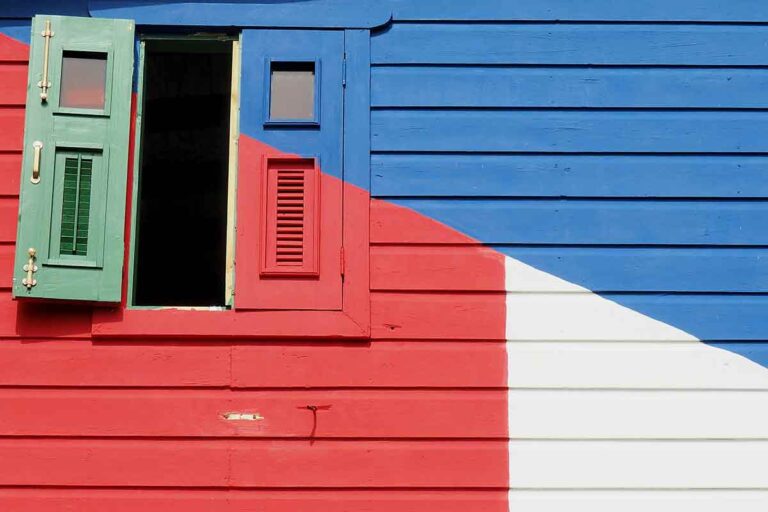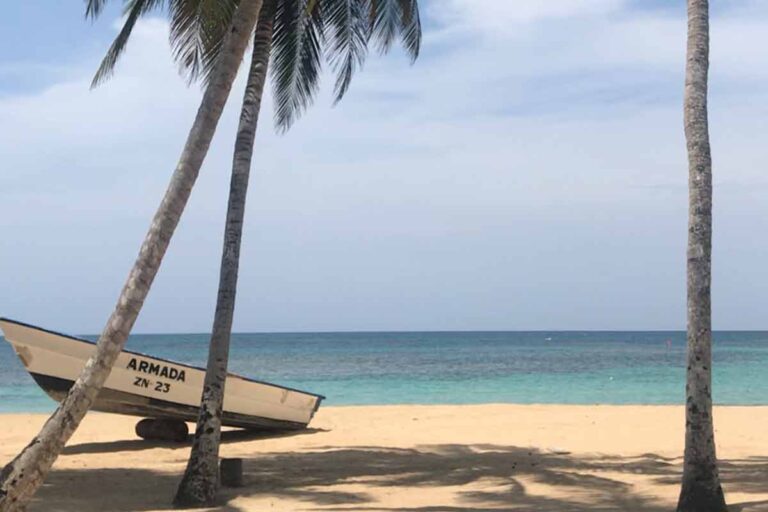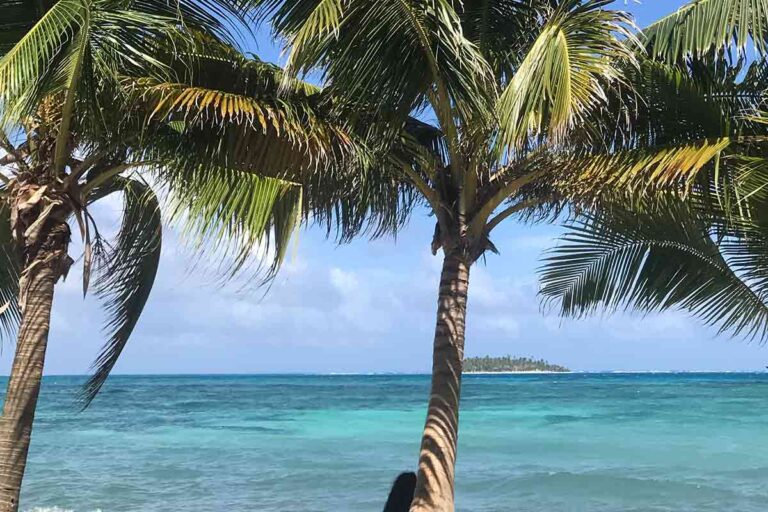Backpacking Puerto Rico
Are you currently planning your backpacking Puerto Rico trip?
If you’ve started doing you’re research you’ll know that Puerto Rico is an island located in the Caribbean and is a melting hotpot of culture, flair and adventure.
Puerto Rico is not your typical backpacking destination in Latin America, however, a trip here will certainly reward those who come.
With its world-class beaches, distinct Caribbean culture, and low-key yet exciting destinations, it really does surprise me that Puerto Rico has not yet firmly landed on the mainstream backpacking map.
Backpacking Puerto Rico
Those looking for authentic culture need to look no further than the capital of San Juan, with is a vibrant mixture of Taino, African and Spanish cultures.
Puerto Rico is also home to stunning nature. El Yunque National Forest is perfect for those looking to escape into a jungle setting and visit some pristine waterfalls.
There are also the stunning islands of Culebra and Vieques and also the bio-luminescent bay in Luquillo.
In this extensive guide, we’ll cover everything to do with traveling to Puerto Rico.
Puerto Rico backpacking routes
Below we’ve created some cool itineraries which can give you some ideas. To be honest, you don’t really need lots of time on this island to see and do everything.
Of course, if you do have the time then you should definitely stay longer.
You could see everything pretty comfortably in a couple of weeks. If you have any questions or would like help planning your dream trip, reach out to us and we’ll be glad to help!
Beach and Chill Itineraries
1 Week: San Juan → Luquillo.
2 Weeks: Rincón → Aguada → San Juan → Isla de Culebra.
Culture Itineraries
1 Week: San Juan → Fajardo.
2 Weeks: Mayagüez → Maricao → Ponce → San Juan.
Bucket List Itineraries
1 Week: San Juan → Isla de Culebra → Luquillo.
3 Weeks: Rincón → Maricao → Guanica → Isla de Culebra → El Yunque → Luquillo → San Juan.
A lot of how your trip will go depends on how you plan before.
Backpacking is spontaneous at best, and you’ll get used to picking up what you need when you need it.
But of course, if you’re at home, it’s probably smarter to see what you have lying around before splurging on stuff whilst on the road!
Backpacking San Juan
The capital of the island, San Juan itself is a major destination to visit on the island.
With its own unique culture, festive atmosphere and warm locals, you’ll love this city. Let’s explore the best thing to see and do here.
Places to visit in San Juan
Viejo San Juan: The old historic center is the beating heart of the capital and in our opinion the best area to stay. With streets bursting with vibrant colors, this area is fun to explore so take a camera with you! Head to Plaza Colón, which has a variety of restaurants as well as some local cheap eats dotted around. It’s also worth heading on this sunset cruise, where you’ll be able to see San Juan from a unique perspective. You’ll also have drinks (alcoholic and non-alcoholic) as well as snacks included too.
Castillo San Felipe del Morro: This old fort was made by the Spanish in order to ward off attacks from pirates and enemy tribes. Nowadays there are not too many coups, but this site is definitely worth a visit with its impressive views and secret passages. You’ll notice features from different periods of Puerto Rico’s history here, including influence from the USA and beyond.
Beaches: San Juan has lots of great options. Playa Escambrón and Playa Pena in Viejo San Juan are a lot less crowded, whilst the beaches in Condado and Isla Verde are extremely well set up for tourists, with lots of amenities nearby. If you’re looking for world-class and picture-worthy beaches, then you are better off heading to Rincón or the islands of Culebra and Vieques.
⬇️ Below you can find a list of our top recommendations for San Juan:
- 🛏️ – Fortaleza Guest House (Viejo San Juan), Hostel H1 (Miramar).
- 🌮 – Tonnes of options in the center of Viejo San Juan. Our favourite is Barranchina, which serves both Puerto Rican food and international delicacies. Mofongo is one of Puerto Rico’s top national foods, so definitely try this out when you’re here!
- 🏛️ – Castillo San Felipe del Morro, Playa Escambrón, Plaza de Armas.
- 🍺 – La Factoría in Viejo San Juan is great for salsa and Latin music. The hotel zone in Condado is also good for parties too.
- 💡 – The bus system is extremely well developed throughout the city. Make plenty of use, as taking taxis can get quite expensive.
Best time to visit San Juan?
San Juan is located on the Atlantic coast, which means the weather is usually more unpredictable than that of the Caribbean side. There are distinct seasons though, which can help you during your planning.
The dry season runs from January until April and only sees 70mm of rain for each month, and around 12-15 days of rain each as well.
Average temperatures during these months are a warm 77°F, with highs of 28°F and lows of 21°F.
The wet season occupies the rest of the year, making the bulk of time in San Juan quite wet. From May until December, there’s a chance of it raining pretty much every day, although these are usually just short spells.
In the summer there’s a higher chance of hurricanes occurring. Average temperatures in the wet season are hotter at around 82°F, with highs of 86°F and lows of 73°F.
Backpacking Mayagüez
Mayagüez is definitely becoming a more popular region to visit on the island.
With world-class beaches, low-key gems and some pristine jungle, this region has a lot to offer.
⬇️ Below you can find a list of our top recommendations for Mayagüez:
- 🛏️ – Rincon Inn (Rincón), Peña’s Palalace (Mayagüez).
- 🌮 – Lots of great options along the beach in Rincón. Our top picks are The Beach House and Cosecha.
- 🏛️ – Salto Curet Falls (Maricao), Almendros Beach (Rincón), The Cathedral of Nuestra Señora de la Candelaria (Mayagüez), Aguada.
- 🍺 – Tamboo and Rincón Beer Company are great options in Rincón. Head to Sinners in Mayagüez for a great night.
- 💡 – During your trip here, we recommend factoring time in to visit Maricao. The region is full of great gems and is also a good transit region to visit along the way to Ponce in the South.
Places to visit in Mayagüez
Mayagüez: The capital of the region is much less visited than San Juan. Whilst less bustling, Mayagüez is a great visit for those looking for culture and architecture. Some of the best sites here include Plaza Colón, The Cathedral of Nuestra Señora de la Candelaria, and the Blue House Joyuda. It’s also a great place for tuna enthusiasts, with many tuna factories offering tours and tasting sessions!
Rincón: This popular beachside resort town is one of the best backpacking spots in the Caribbean! It’s already well known by surfers as it has some incredible waves, as well as hosting annual surf competitions with plenty coming from all corners of the globe. The beaches here are great, and there are lots of nightlife options and amenities around. Beginner surfers can take a lesson with a professional instructor here too
Aguada: This sleepy town is located just a little north of Rincón. It hasn’t yet really caught the backpacking attention yet, so those who come will enjoy a much more low-key vibe. This tiny town definitely holds a spot in my heart (George), as it was the first place I ever backpacked and stayed in! The beaches here are virtually empty, which is great for those looking for private areas or hogging the waves for themselves. The town also has lots of cool small bars, which definitely get louder come the weekend.
Maricao: This small jungle town is more off the beaten path, but in our eyes is one of the true gems of Puerto Rico. A couple of hours east of Mayagüez, this colonial town is a great base for exploring the region. The beautiful Salto Curet waterfalls are located close to here, and you can also see the impressive Torre de Piedra (stone tower) that has great views from the top out over the cloud forest.
Best time to visit Mayagüez?
Temperatures remain fairly consistent throughout the year in this region, although areas in the Maricao Jungle can fluctuate more, as well as get more humid.
Highs are around 31°F, with lows of 65°F. The hottest month to visit the region is August, with averages of around 27°F.
The rainy season in this region runs from May until November. There are roughly 18-20 days of rain each month, with around 120-160mm of rainfall for each respectively.
The wettest month on average is July. The dry season runs from December until April, with roughly 70-100mm of rain each month.
This time is definitely better to visit, especially in the Maricao Jungle, as it’s common for heavy rains to block roads and make it difficult to get around.
Overall, visiting this region at any time of the year promises great temperatures, although rainfall is much greater during the summer.
If you are thinking of heading to Maricao, then avoid the months of July and August, where heavy rainfall sometimes makes the mountainous roads inaccessible.
Backpacking Ponce
Out of all of the regions on our list, Ponce definitely receives the least amount of attention.
Whilst it’s true that other regions have more going for them, Ponce delivers in that it has true Puerto Rican culture here (as in it’s not yet made for tourists’ eyes). There are also some cool things to do, which we’ll explore below.
⬇️ Below you can find a list of our top recommendations for Ponce:
- 🛏️ – Hostel Casa Blanca (Guanica), Boutique Hotel Belgica (Ponce).
- 🌮 – In Ponce, there are loads of great cheap eats which specialize in Puerto Rican bites and cuisine. Some of the best here include Sabor y Rumba and El Barril de la Mulata.
- 🏛️ – Gilligan’s Island, Playita Rosada (Guanica), Parque de Bombas (Ponce), Museo Castillo Serrallés (Ponce).
- 🍺 – Birriola and La Pulga are good options in Ponce. There are not many options in Guanica, so if you want a good night out you’re better off staying along the West Coast in hotspots like Rincón..
- 💡 – We recommend staying in Guanica, where you’ll have easy access to the stunning beaches and islands. From here, it’s only half an hour’s drive to Ponce, so you can easily make day trips without too much time on the road.
Places to visit in Ponce
Gilligan’s Island: One of the best mangrove islands in Puerto Rico, and has some really clear waters which are ideal for snorkeling. To get here, you’ll first want to head a few miles south from Guanica to Punta Jancito. From here you can rent a kayak and make your way across! Definitely one of the best day trips to do in the south of the island.
Ponce: Once the focal point for the exportation of rum, coffee and sugar cane, popularity towards the southern coast city declined as San Juan became the new capital. Despite this, Ponce is great for architecture and museums to learn about Puerto Rico’s vibrant history. The Museo Castillo Serrallés is one of the best to visit, and whilst here you should also check out the illustrious Parque de Bombas and La Cruceta del Vigía, a 100-foot-high cross with amazing views from the top. You can join this guided city tour, where you’ll visit unorthodox buildings such as the Parque de Bombas as well as learning more about Ponce’s colorful history.
Guanica: Mostly known as a resort town, Guanica is also home to some great beaches and nature. The Bosque Estatal de Guánica is one of the best-kept dry forests in the Caribbean and is well worth a visit for hiking and getting immersed in nature. There are some beautiful beaches to visit here including Playita Rosada and Cayos de Caña Gorda.
Best time to visit Ponce?
Visiting any time of year will promise hot and lush temperatures, due to its location on the Caribbean coast (and away from the Atlantic winds).
Average temperatures range from 75-81°F throughout the year. The hottest month to visit is July, with highs of up to 94°F.
The coolest (well not so cool) month to visit would be January, with lows of 68°F and averages of around 75°F.
The weather pattern for rainfall is a bit strange here. From January to March, rain is at its lowest in the entire year, with between 20-50mm for each month.
April until June is historically the wettest time of year to visit, with up to 170mm of rain recorded. Unlike other coastal regions, the rain actually drops quite a bit in July and August.
Rain picks up again from September until November, but not as heavy with a max of 150mm for each month. December starts to see another drop as we head into the New Year.
Overall, June and July are hands down the best times with the hottest temperatures, and lower rainfall than the rest of the year.
Visiting around the winter months is also great for overall decent weather, although accommodation prices might be more expensive due to the busier tourist season.
Backpacking Fajardo
The region of Fajardo and its tropical islands definitely takes the cream of the crop when it comes to top destinations in Puerto Rico.
Below we’ll look at the very best, including a bio-luminescent bay, mysterious jungle and waterfalls, as well as some of the best waters for snorkeling and diving in the entire Caribbean.
⬇️ Below you can find a list of our top recommendations for Fajardo:
- 🛏️ – The International Hostel El Collage (Fajardo), Casa Coral (Luquillo).
- 🌮 – Zaco Tacos & Kiosko La Pica in Culebra. If you like seafood, then head to Pescadería Don Candi in Fajardo.
- 🏛️ – Flamenco Beach (Isla de Culebra), La Mina Waterfalls (El Yunque), Laguna Grande Bioluminescent Bay (Fajardo).
- 🍺 – Boardrider’s Surf Bar and Grill in Luquillo.
- 💡 – If exploring the whole region then stay in Fajardo. Not only is the ferry there, but it’s also less than an hour to get to the other major areas worth visiting.
Places to visit in Fajardo
Isla de Culebra: This lesser visited island in our opinion is the better to see. Whilst Vieques is also indeed beautiful, it’s a lot more touristy and expensive. Isla de Culebra (meaning Snake Island in Spanish), doesn’t actually have any snakes ironically, however, is home to Flamenco Beach, which is often regarded as one of the most beautiful in the world. Other cool things to see and do here include the Museum of History and taking a boat over to the smaller island of Culebrita. We highly recommend this Catamaran Day Tour, which includes a buffet lunch, FREE Pina Coladas and Rum Punch as well as a trip to the Cordillera Islands
El Yunque: This tropical rainforest is a top visit on any itinerary to Puerto Rico. Only an hour drive from San Juan, it is a great place to get away from the bright lights and into a more relaxed and fresh environment. Some of the coolest things to see include La Mina Waterfalls and the Yokahú Observation Tower. There are lots of tours that explore the region as a day trip, which you can usually find in your hostel or accommodation.
Fajardo: This port town is the most visited as it has ferry connections to the Culebra and Vieques Islands. However, Fajardo itself is well worth the visit. The Laguna Grande is home to thousands of plankton, which when stimulated light the water a bright blue hue. Definitely worth coming during low moons to truly experience this phenomenon. There’s also the impressive lighthouse of Faro Las Cabezas de San Juan that you should check out.
Luquillo Only a 45-minute drive east of San Juan, Luquillo is a true backpacking gem. With an endless array of palm-fringed beaches, this sleepy town is a perfect alternative to the bustling capital. Some of the best beaches to visit here include Playa Escondida and Balneario La Monserrate Beach. The Carabalí Rainforest Park is a cool day adventure trip you can take from Luquillo, where you can hire go-karts and explore the region. There are lots of cheap hostels and homestays here as well.
Best time to visit Fajardo?
The weather in Fajardo can best be described as hot and oppressive. There’s a dry and wet season every year, which we’ll cover below now.
The dry season runs from December until April, and is considered the best time to go for consistent and nice weather.
Rainfall for each month here ranges from 50-100mm each respectively, with no more than 15 days of rain each. The overall driest month to visit is March.
Average temperatures hover around 75°F for these months. The so say “coolest” month would be January; however highs can still reach 84°F with lows of only 70°F.
The wet season here runs from May until November. Rainfall is a lot higher, and there are increased chances of hurricanes and storms from June until September.
May and July are the wettest months overall, with around 23 days of rain and 150mm falling throughout each.
Temperatures are hotter during the wet season, and with increased humidity can make it sometimes uncomfortable. The average temperatures for these months are between 79-83°F, with lows of 73°F and highs of up to 90°F.
Backpacking Puerto Rico
That’s all for our backpacking Puerto Rico guide! As you’ve seen, this island paradise is full of stunning beaches, historic gems and a distinct, unique culture.
There are also a lot of hidden gems that still haven’t made the major backpacking sites yet, including the Maricao Jungle and the Southern Coast.
In this guide we’ve covered everything you’ll need to know for a trip to Puerto Rico. This includes all the major destinations, off the beaten path gems, languages and culture, packing advice, budgeting and much, much more.
We hope you enjoyed this backpacking Puerto Rico guide. If you have any questions or want advice, drop a comment below and we’ll get back to you
Be sure to see George’s Latin America bucket list for more latin travel ideas.
👉🏽 P.S. If you’ve found this guide helpful, buy us a coffee here to say thanks! Or, support us by downloading our South America Travel Bible to get our best content.
“Dear traveler! Some links in this post contain affiliate links. Meaning, if you click through and make a purchase, book a hostel or sign up for a tour, we may earn a small commission at no additional cost to you. Your support means a lot and helps us to carry on traveling and maintaining the quality of this site for you.”

